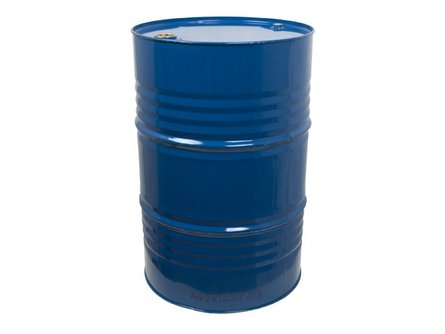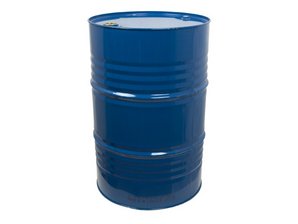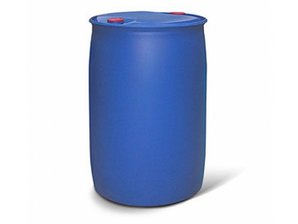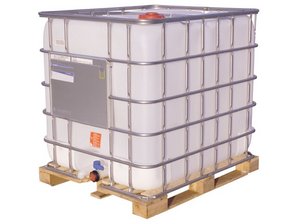
Raw materials for polyurethanes
Polyurethane (PPU and PU) belongs to a class of polymers. Unlike other common polymers, polyurethane is produced from a wide range of starting materials. This allows the production of polyurethanes with different chemical structures, leading to many different applications. Polyurethane is usually produced by reacting an isocyanate with a polyol. Polyurethane elastomers are very versatile in their properties and can be used in various industries, including construction, retail, textiles and furniture, electronics, automotive, chemicals, medicine, aviation, shipbuilding, rocket and space development. Polyurethanes are also used as insulating materials and coatings and are raw materials for the production of resins used in construction.
Catalog raw materials for polyurethanes

TDI 65/35
Clear or pale yellow low-viscosity liquid with a melting point of about 5 °C and a characteristic pungent odor. It is a mixture of 65% 2.4-isomer and 35% 2.6-isomer. It is a raw material for the production of varnishes, adhesives, sealants, various…

TDI 80/20
Clear or pale yellow low-viscosity liquid with a melting point of about 15 °C and a characteristic pungent odor. It is a mixture of 80% 2.4-isomer and 20% 2.6-isomer. It is a raw material for the production of varnishes, adhesives, sealants, various…

TDI 100
Clear or pale yellow low-viscosity liquid with a melting point of about 22 °C and a characteristic pungent odor. It is a mixture of 100% 2.4-isomer. It is a raw material for the production of varnishes, adhesives, sealants, various elastomers.

Laprol 3003
Is a product of propylene oxide alcoholate polymerization with glycerin. Applied in production of flexible polyurethane foam and as foam suppressant in microbiological processes (yeast production).

Laprol 3603-2-12
Is a product of alcoholate polymerization of propylene oxide and ethylene oxide with glycerine and antioxidant with special system. Product is used for production of flexible block polyurethane foams.

Laprol 373
Is a product of propylene oxide alkaline polymerization with glycerin and further phosphate-sorbent purification. It is used for production as polyol feedstock for production of different types of polyurethane foams.

Laprol 4503
Is a product of propylene oxide alcoholate polymerization with glycerin. It is used for production of thiol polyethers employed in construction sealants compounds.

Laprol 5003-2-15
Is a product of alcoholate polymerization of propylene oxide and ethylene oxide with glycerine with ethylene oxide content 14-16%. It is used for production of polyurethane foams.

Laprol 5003-2-B10
Is a product of propylene oxide alcoholate polymerization with glycerin with further block copolymerization with ethylene oxide. It is used for production of flexible polyurethane foams.

Laprol 6003-2B-18
Is a product of propylene oxide alcoholate polymerization with glycerin with further block copolymerization with ethylene oxide. It is used for production of microcell shock absorbing polyurethane foams.

Polyether 294
Is a product of propylene oxide reaction with a water solution of ethlenediamine. It is used for production of rigid polyurethanes as main polyol component and catalyst.

Polyether 1000
Is a product of propylene oxide anionic polymerization. It is used for production of single-component polyurethane foam.

Polyether 4003-2-16
Is a product of alcoholate copolymerization of propylene oxide and ethylene oxide on glycerin base. It is used for production of polyurethane materials for construction and furniture industry.

Polyether 5503-2-16
Is a product of alcoholate copolymerization of propylene oxide and ethylene oxide on glycerin base. It is used for production of polyurethane materials.
Related products

Metal barrel 216.5 liters
Used to transport liquid products and substances that are not actively working on the steel. To prevent the active interaction of matter with the material drum, a system of internal coatings (based paints) to guarantee the permanence characteristics…

Plastic barrel 227 liters
Used for transporting a wide range of both food and corrosive substances, most of which are prohibited for packaging in metal containers without special coatings: acid, alkaline, chlorinated products and other dangerous goods, temperature not…

Intermediate bulk container (IBC) 1000 liters
Compared with steel and plastic drums, has a number of advantages in terms of ease of use, cost effectiveness and safety for the environment and humans. It is intended for repeated use, it is optimal for transportation and storage of liquid products…

